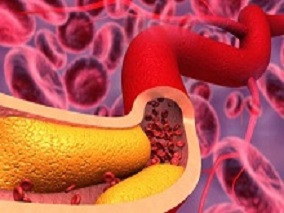韩雅玲院士:急性冠脉综合征患者抗血小板的“降阶治疗”策略
心血管疾病,特别是发生急性冠脉综合征(ACS)是全球致死及致病的重要原因之一。导致ACS事件的病理生理学机制被公认为冠脉内粥样斑块侵蚀或破裂以及随后形成血栓。随后发生由血小板和血浆凝血因子驱动的细胞内信号转导,并导致血栓形成。冠脉内血栓形成的最终后果是完全或部分血管闭塞,并导致ACS患者常见的特征性症状和体征。
阿司匹林联合血小板P2Y12受体抑制剂(P2Y12抑制剂)的双联抗血小板治疗(DAPT)是近10余年来ACS患者以及行经皮冠脉介入术(PCI)患者预防冠脉血栓事件的推荐治疗策略。氯吡格雷、普拉格雷和替格瑞洛是目前最常用的口服P2Y12抑制剂。尽管氯吡格雷是治疗ACS的经典P2Y12抑制剂并得到长期、广泛应用,但目前指南均推荐优选新型P2Y12抑制剂普拉格雷和替格瑞洛而非氯吡格雷,因为新型P2Y12抑制剂可进一步降低血栓形成的风险、净临床获益更佳。由于不同口服P2Y12抑制剂在ACS的不同阶段被证实具有不同的获益和风险,目前临床医生可以基于患者的具体临床情况在不同的P2Y12抑制剂之间进行转换。但是,由于出血风险增加、呼吸困难、治疗依从性和(或)费用问题,部分患者使用新型P2Y12抑制剂(替格瑞洛)出现提前停药的问题,从而带来了血栓事件的风险增高。
因此,通过减少剂量、缩短用药时间和从新型P2Y12抑制剂转换为经典P2Y12抑制剂(从替格瑞洛或普拉格雷到氯吡格雷)即“降阶治疗”,可能更利于减少缺血和出血的不良事件。本文综合回顾了相关文献,希望能够为临床优化ACS患者抗血小板治疗提供一些参考意义。
一、“降阶治疗”的背景和定义
探索“降阶治疗”策略有多种原因。首先,严重出血事件与死亡率增加相关,因此要控制抗血小板治疗的强度以减少出血的发生,而随着ACS病情的演变,出血事件的风险逐渐增加而缺血风险下降是需要“降阶治疗”最重要的原因。其次,对于使用普拉格雷的低体重和老年患者剂量要求的不明确,替格瑞洛要求的每天2次给药,以及后者较频繁发生的呼吸困难等副作用限制了这些新型抑制剂的广泛和长期使用。第三,与氯吡格雷相比,使用替格瑞洛和普拉格雷引起的药物花费较多,这也会影响患者的依从性。简而言之,如果发生较多的药物相关不良反应、出血风险或需要同时口服抗凝药或者必须减少药物开支的问题时,就需要考虑“降阶治疗”。
“降阶治疗”包括任何对ACS患者抗血小板治疗强度减少的治疗方法,旨在与ACS早期不稳定斑块破裂导致的高血栓风险、而随后血栓风险逐渐下降、不稳定斑块趋于愈合的病理生理演变状态相一致,进行适当、合理及个体化的抗栓治疗,比如换用相对弱效的P2Y12受体抑制剂、减少其剂量或缩短DAPT用药时间或早期(ACS后3个月)改用P2Y12受体抑制剂单药治疗等。
二、“降阶治疗”相关研究和初步结果简介
(一)早期P2Y12受体抑制剂单药治疗
当前国内外相关指南推荐植入药物洗脱冠脉支架(DES)的ACS患者应当接受阿司匹林联合强效P2Y12抑制剂(特别是替格瑞洛)的DAPT至少12个月。为了减少这类患者在强效抗栓前提下的出血风险,应用更强效的P2Y12抑制剂替格瑞洛单药治疗是否可替代阿司匹林联合替格瑞洛的DAPT是正在探索的热点问题。其中之一的研究是正在进行的多国、随机、双盲、安慰剂对照的TWILIGHT研究(高危缺血患者冠脉介入术后替格瑞洛联合阿司匹林或替格瑞洛单药治疗;ClinicalTrials.gov识别号NCT02270242)。该研究旨在检验一种研究假设:那些DES植入术后接受DAPT(阿司匹林81~100mg/d+替格瑞洛90mg×2次/日)3个月的高危ACS患者,在减少临床相关出血事件上替格瑞洛单药治疗12个月是否优于DAPT(替格瑞洛+阿司匹林)12个月。该研究的第二重要假设是替格瑞洛单药治疗在减少严重缺血事件上不劣于替格瑞洛+阿司匹林。本研究纳入≥65岁的ACS患者,且存在至少一个高危缺血因素(比如糖尿病或慢性肾病)以及至少一个血管造影缺血危险因素。研究筛查后,患者会被随机分组至替格瑞洛+阿司匹林治疗组或替格瑞洛+安慰剂治疗组,于3个月、9个月以及15个月进行随访。
此研究特别设计为高危缺血PCI人群中撤除阿司匹林的安全性和有效性,在主要出血终点事件上是否统计学上有效力。预期TWILIGHT研究结果可能会对改变PCI术后长期抗血小板药物治疗的临床实践提供重要的相关信息。
(二)减少P2Y12受体抑制剂剂量
替格瑞洛是一种强效、直接作用的P2Y12抑制剂,目前欧洲和美国ACS指南中其推荐等级均高于氯吡格雷。PLATO研究显示替格瑞洛抑制血小板会减少ACS患者动脉粥样血栓事件,这显著促进了该药物在现今临床实践中的广泛使用。
但是使用替格瑞洛抑制血小板的强度和时程在心肌梗死(MI)后的急性期和接下来的稳定期应当有所不同。在PEGASUS-TIMI54研究中,将合并至少一种动脉粥样血栓危险因素的MI 1~3年患者随机分为3组(均服用低剂量阿司匹林)给予DAPT 12个月:替格瑞洛90mg(2次/日)、替格瑞洛60mg(2次/日)或氯吡格雷75mg(1次/日)。与替格瑞洛90mg(2次/日)相比,替格瑞洛60mg(2次/日)血小板抑制程度稍低,但仍比氯吡格雷75mg(1次/日)强效。与氯吡格雷75mg(1次/日)相比,两种剂量的替格瑞洛均显著减少12个月随访期内的心血管死亡、MI或卒中的主要终点,90mg组减少15%的相对风险,60mg组减少16%(90mg组:HR 0.85,95% CI 0.75~0.96,P=0.008;60mg组:HR0.84,95% CI 0.74~0.95,P=0.004)。替格瑞洛组TIMI严重出血发生率(90mg组2.60%,60mg组2.30%)高于氯吡格雷组(1.06%)(不同剂量组与氯吡格雷组相比P<0.001);3组中的颅内出血或致命出血发生率未见统计学差异(90mg替格瑞洛组0.63% vs. 60mg替格瑞洛组0.71% vs. 氯吡格雷组0.60%,P>0.05)。替格瑞洛60mg组相似的效力和更低的不良事件发生率,使其在ACS患者长期抗血小板治疗中似乎更有优势。
PEGASUS-TIMI 54亚组研究显示,低剂量组替格瑞洛及其活性代谢物(ARC124910XX)的血浆浓度分别降低了62%~65%和54%,但患者出现血小板高反应性(HPR)的发生率仍然较低(3.5%)。在糖尿病患者中,替格瑞洛60mg与90mg剂量相比,在抑制血小板反应性方面同样有效。然而,与PLATO研究相比,PEGASUS-TIMI 54研究中替格瑞洛停药更为常见。服用替格瑞洛90mg的患者第一年停药率比服用替格瑞洛60mg的患者明显增高。既往罹患急性心肌梗死(AMI)的患者接受DAPT时更容易出现替格瑞洛的停用,常见原因是在开始治疗后不久即出现了轻中度出血临床事件。另一方面,PEGASUS-TIMI 54研究显示出替格瑞洛60mg组患者更佳的耐受性、更低的停药率,且抗缺血的有效性相似,因此倾向于支持相对稳定的冠心病患者使用低剂量替格瑞洛。在AMI的急性期严重不良心血管事件的发生率较高,包括心血管死亡、MI和卒中,随着MI的病理生理学演变,在1个月后上述事件的发生率会逐渐下降至一个相对稳定的水平,病情趋于稳定。
正在进行的ELECTRA研究(ClinicalTrials.gov识别号:NCT03251859)是一项随机、开放标签,药物代谢动力学及药物效应动力学研究。研究目的是评估近期患AMI并接受直接PCI的稳定期冠心病患者减少替格瑞洛的维持剂量对血小板抑制率的影响。入选发生AMI并接受直接PCI的患者被随机分为2组:替格瑞洛90mg(2次/日)治疗45天组和替格瑞洛90mg(2次/日)治疗30天后,减少维持剂量至60mg(2次/日),继续治疗15天组。研究将会比较两组的血小板功能情况。如果提示替格瑞洛减量组仍能够达到较理想的血小板抑制结果,则可能为更早减少替格瑞洛剂量的治疗方式提供证据支持。
(三)减少双联抗血小板治疗的用药时间
当前欧洲ESC-STEMI指南(2017)和美国DAPT指南(2016)以及中国经皮冠状动脉介入治疗指南(2016)、非ST段抬高型急性冠状动脉综合征诊断和治疗指南(2016)均建议ACS患者接受DAPT至少12个月,这种策略对于血栓风险持续增加的患者是合适的(包括6个月后支架血栓以及自发心血管事件)。但研究发现长期使用DAPT会导致更多的出血事件并增加全因死亡率,因此可能抵消心性死亡和非致死性缺血性事件的减少所带来的益处。
近期研究结果提示,对于植入新一代DES的中低危ACS患者,相比给予12个月或更长或24个月DAPT,给予3~6个月DAPT在心血管事件或严重出血事件发生风险方面未见明显差异。
韩雅玲院士牵头的I-LOVE-IT 2研究纳入接受PCI的稳定冠心病或ACS患者,随机进入接受新型生物可降解聚合物药物洗脱支架(BP-DES)组的亚组患者再次被随机化(1∶1)分组至接受6个月DAPT(100mg阿司匹林+75mg氯吡格雷)或12个月DAPT治疗,主要终点为12个月靶病变失败(TLF)。结果:接受BP-DES的患者接受6个月DAPT组和12个月DAPT组在12个月随访期内TLF未见明显差异(6.8% vs. 5.9%,P>0.05,95% CI −1.37%~3.11%),提示接受BP-DES植入的中低危ACS或稳定冠心病患者给予6个月的DAPT是安全的,为临床提供了有意义的参考价值。最近发表的SMART-DATE研究入选ACS植入DES后的患者(2712例),结果提示6个月DAPT(n=1357)与≥12个月DAPT(n=1355)在MACCE(18个月全因死亡、MI或卒中的复合终点)方面结果相似(4.7% vs. 4.2%,绝对风险差异0.5%,95%CI单侧上限1.8%,非劣性P=0.03,预设非劣性边界2.0%)。然而,6个月DAPT组比≥12个月DAPT组再次心肌梗死发生率明显增加[1.8% vs. 0.8%,95%CI 2.41(1.15~5.05),P=0.02]。值得注意的是,在该项研究中,6个月DAPT组患者中应用氯吡格雷的比例为79.7%,12个月或更长时间DAPT的应用中氯吡格雷的比例为81.8%。
总之,上述研究表明6个月甚至3个月的最少用药时间对于低危ACS及稳定冠心病患者植入二代DES后是有效的,而对于ACS患者,延长DAPT用药时间超过12个月似乎对于高危患者有益,最显著的是对既往MI患者有益。
(四)将强效P2Y12抑制剂换为氯吡格雷
虽然多个国际指南推荐在发生ACS后第一年DAPT方案首选普拉格雷或替格瑞洛与阿司匹林进行联合,但是在临床实际中时常出现由于患者具体临床因素和(或)经济负担等原因改换为氯吡格雷的“降阶治疗”情况。研究显示,临床上从替格瑞洛换为氯吡格雷的潜在原因被总结为既往颅内出血、呼吸困难、心动过缓、活动性出血或出血风险增加、痛风史、药品较难获得以及费用上的考虑等,院内“降阶治疗”的发生率为5%~14%。而出院后换用P2Y12抑制剂发生于5%~8%的患者,其中大多数情况为“降阶治疗”。
近期一项对观察性研究和注册研究进行的meta分析报告表明,从替格瑞洛到氯吡格雷的“降阶”换药发生率为19%,较上述研究结果更高。住院治疗的换药发生率最高(22%),其次是出院时(20%),随访至出院1年,发现17%的出院患者“降阶”换药至氯吡格雷,评估与“降阶”至氯吡格雷相关的临床结局发现,严重不良心脑血管事件(MACCE)的发生率为2.1%(95% CI 0.9~3.3),其中心血管死亡率为1.4%(95% CI 0~2.9),MI发生率为2.0%(95% CI 0.3~3.8),全因死亡率为3.1%(95% CI 0.4~5.9)。对于出血事件,全部出血(严重和轻微)发生率为3.3%(95% CI 1.7~4.9),严重出血发生率为1.1%(95% CI 0.3~2.5)。因此部分患者可能是由于出现了临床出血事件继而驱动患者选择了“降阶治疗”。
TOPIC研究表明,发生ACS后应用阿司匹林+新型P2Y12抑制剂1个月后,降阶至阿司匹林+氯吡格雷(降阶组),结果显示可以减少出血并发症,其中大多数是轻微出血。虽然该项研究并未显示缺血事件在降阶组与非降阶组间存在差异,但应该考虑到研究样本量有限等因素,其结果并不能排除随机性误差。
TROPICAL-ACS研究结果提示,服用普拉格雷1周后采用血小板功能检测(PFT)指导抗血小板降阶治疗(至氯吡格雷)在1年净临床获益方面不劣于普拉格雷标准治疗。TROPICAL-ACS研究并未显示“降阶治疗”增加任何缺血事件,尽管有出血事件减少的趋势,但没有统计学差异。迄今为止,TROPICAL-ACS是唯一使用PFT结果来调整(降阶)抗血小板治疗的随机对照临床试验。
因此,基于上述临床研究证据,可能对于中低危的冠心病患者进行DAPT时,可以根据其具体病情,综合判断,制订个体化的DAPT策略,“降阶治疗”是值得考虑和推荐的。
1.从新型P2Y12受体抑制剂替格瑞洛如何更好地转换为氯吡格雷,相关研究数据非常有限。由于替格瑞洛失效迅速(3~5天),若停用替格瑞洛并继而每日75mg氯吡格雷代替,则在氯吡格雷尚未完全起效(5~7天)时,替格瑞洛即已失效,则可能出现抗血小板治疗的空窗期,增加患者血栓事件发生风险。而且即使给予600mg氯吡格雷负荷量,其药效学也存在较高的个体化差异。基于这些考虑,当从替格瑞洛降阶为氯吡格雷时,应当更适宜给予600mg氯吡格雷负荷量一次,因大部分患者服600mg氯吡格雷负荷量后2~6小时发挥作用。一项药效学研究显示末次替格瑞洛维持量12小时后换用普拉格雷存在药物间相互作用,表明普拉格雷的P2Y12受体受到替格瑞洛的残留影响,可能增加出血风险。因此,建议替格瑞洛转换为氯吡格雷,而不是转换为普拉格雷,并且应在替格瑞洛停用至少12小时后,再给予600mg氯吡格雷负荷量一次,这有利于有足够的时间清除替格瑞洛及其代谢物(半衰期8~12小时)。
近期一项前瞻性、随机、开放标签的临床研究(SWAP-4研究,NCT02287909)基于药效学评估从替格瑞洛降阶至氯吡格雷的最佳策略。入选对象为接受维持量阿司匹林(81mg/d)和替格瑞洛(180mg负荷量随后90mg×2次/日维持量)的患者。在给予7天的替格瑞洛维持量治疗后,患者(n=80)被随机分为4组:①A组:替格瑞洛末次维持量24小时后给予氯吡格雷600mg负荷量(氯吡格雷600~24小时);②B组:替格瑞洛末次维持量12小时后给予氯吡格雷600mg负荷量(氯吡格雷600~12小时);③C组:替格瑞洛末次维持量24小时后给予氯吡格雷75mg维持量(氯吡格雷75~24小时);④D组:替格瑞洛90mg×2次/日维持量(替格瑞洛90mg×2次/日)。与氯吡格雷治疗作为维持药物相比,替格瑞洛90mg×2次/日作为维持量的D组的血小板反应性最低。随着时间延长,A组和B组的最大血小板聚集(MPA)比C组更低(P=0.041,P=0.028)。A组和B组之间并无药效学差异。这些发现表明,从替格瑞洛降阶为氯吡格雷治疗与血小板反应性升高相关,启动氯吡格雷维持量治疗之前使用负荷量被认为可以缓解血小板反应性升高。
2.关于转换为氯吡格雷的现有共识和推荐2017年ESC-DAPT指南推荐紧急情况下,替格瑞洛转换为氯吡格雷:于替格瑞洛末次给药24小时后给予氯吡格雷负荷量(600mg);普拉格雷转换为氯吡格雷:于普拉格雷末次给药24小时后给予氯吡格雷负荷量(600mg)。而在非紧急情况下,替格瑞洛转换为氯吡格雷:末次给药24小时后给予氯吡格雷600mg负荷剂量;普拉格雷转换为氯吡格雷:于普拉格雷末次给药24小时后给予氯吡格雷维持量(75mg)。根据指南的声明,这些转换方法全都基于药效学结果。并且近期发表的《P2Y12受体抑制剂转换治疗国际专家共识》也包括同样的推荐。
三、当前需解决的临床现实问题
1.降阶治疗的时期目前临床指南很大程度上依赖的证据通常晚于那些潜在重要的技术进展,包括新一代DES的应用等,而在近期临床研究所入选的患者中ACS所占比例较低,并且许多研究由于事件率过低而不足以检测出统计学方面的差异。然而,现有的这些证据被扩展至包含血栓事件高风险及出血高风险的人群,这可能会造成真实世界中ACS患者在病情演变的不同阶段,却接受了“不合时宜且一成不变”的抗血小板治疗方案,进而使相对获益和风险产生不确定性。
由于ACS或PCI后血栓形成风险相对增高的阶段将持续数周至数月不等,因此从临床事件开始计算的换药的时机可以被定义为急性期(<24小时)、早期(1~30天)、晚期(>30天至1年)或极晚期(>1年)。来自于单个中心的临床研究和药效学研究证实急性期或早期换药可能是安全的,并且可以减少出血事件。
TROPICAL-ACS结果提示,ACS患者PCI后采用个体化的、“降阶抗血小板治疗策略”(早期采用强效抗血小板药普拉格雷,1周后应用氯吡格雷)与传统12个月普拉格雷治疗相比是安全可行的,该研究进一步在不同P2Y12拮抗剂之间降阶治疗的策略上补充了新的证据。
TOPIC研究发表后,提出了一个可能理想的降阶治疗策略,即在ACS接受PCI应用新型P2Y12拮抗剂之后的第一个月内降阶为氯吡格雷,提示在保证抗缺血疗效相当的情况下,可明显减少临床出血并发症。ACS患者高缺血风险阶段应用新型P2Y12抑制剂可有效降低血栓风险,但随着病理生理学演变为出血风险相对升高而缺血风险逐渐降低时,这个阶段将可能需要进行抗血小板药物的降阶治疗。
2.个体化治疗策略在临床中识别那些可能会从降阶治疗方案中获益的患者非常重要,而患者病情演变所处的阶段和患者的病情种类是决定实施这种换药策略的关键因素。从临床实际操作方面来说,血小板功能指导的“降阶治疗”可能对于不适合进行强效P2Y12抑制剂长期治疗的患者更为适用。然而,多个大型临床试验均未能证实基于血小板功能的个体化抗血小板治疗策略的获益。此外,尽管便于使用的PFT在医院广为使用,但是如患者不能方便地来医院进行PFT,其在临床的实际应用也会大打折扣。
PLATO研究的事后分析表明,在细胞色素P450(CYP)2C19[CYP2C19]功能缺失(LoF)等位基因非携带者中使用氯吡格雷治疗,其血栓形成风险与使用替格瑞洛治疗者相似。随着快速简便的基因型分析设备被广泛应用,在日常临床实践中进行基因型分析检测已经实现,但迄今为止尚未在STEMI人群中以随机方式对基于CYP2C19基因型的个体化抗栓策略进行研究与评估。
总之,未来的研究需要在真实世界环境下继续探索具有高特异性及准确率、并且便捷实用的预测方法或设备。
四、讨论
冠心病抗血小板治疗的“降阶策略”是临床实际中是真实存在的,需要心血管医生进一步探索完善。对出血风险的顾虑以及社会经济因素是真实世界中“降阶治疗”的关键决定因素。例如,减少剂量,或缩短DAPT用药疗程,转换P2Y12受体抑制剂种类(从强效P2Y12受体抑制剂转换为弱效P2Y12受体抑制剂)或用其作为单一抗血小板治疗,已被临床用于在预防缺血事件的同时控制出血风险。但除PEGASUS-TIMI 54研究外,其他现有的对“降阶治疗”效果的数据来源仅为少数的注册研究或药效学研究。未来需要更多大规模临床研究以进一步证实降阶治疗策略的远期获益。既往研究结果显示低缺血风险患者采取降阶治疗,不仅能够获得较好的抗血小板效应,同时也降低了出血事件的风险。临床医生应充分考虑患者各种因素,动态评估病情演变,权衡抗血小板与预防出血的获益和风险,给出适合患者ACS不同病程的、个体化的抗血小板治疗方案。
参考文献
1.Benjamin EJ, Blaha MJ, Chiuve SE, et al. Heart Disease and Stroke Statistics-2017 Update: A Report From the American Heart Association. Circulation, 2017, 135(10): e146-e603.
2.LibbyP. Mechanisms of acute coronary syndromes and their implications for therapy. N Engl J Med, 2013, 368(21): 2004-2013.
3.Davi G, Patrono C. Platelet activation and atherothrombosis. N Engl J Med, 2007, 357(24): 2482-2494.
4.Angiolillo DJ, Ueno M, Goto S. Basic principles of platelet biology and clinical implications. Circ J, 2010, 74(4): 597-607.
5.vine GN, Bates ER, Blankenship JC, et al. 2011 ACCF/AHA/SCAI Guideline for Percutaneous Coronary Intervention: executive summary: a report of the American College of Cardiology Foundation/American Heart Association Task Force on Practice Guidelines and the Society for Cardiovascular Angiography and Interventions. Circulation, 2011, 124(23): 2574-2609.
6.Valgimigli M, Bueno H, Byrne RA, et al. 2017 ESC focused update on dual antiplatelet therapy in coronary artery disease developed in collaboration with EACTS: The Task Force for dual antiplatelet therapy in coronary artery disease of the European Society of Cardiology (ESC) and of the European Association for Cardio-Thoracic Surgery (EACTS). Eur Heart J, 2018, 39(3): 213-260.
7.Dalal JJ, Digrajkar A, Gandhi A. Oral antiplatelet therapy and platelet inhibition: An experience from a tertiary care center. Indian Heart J, 2016, 68(5): 624-631.
8.Amsterdam EA, Wenger NK, Brindis RG, et al. 2014 AHA/ACC guideline for the management of patients with non-ST-elevation acute coronary syndromes: executive summary: a report of the American College of Cardiology/American Heart Association Task Force on Practice Guidelines. Circulation, 2014, 130(25): 2354-2394.
9.Bueno H, Sinnaeve P, Annemans L, et al. Opportunities for improvement in anti-thrombotic therapy and other strategies for the management of acute coronary syndromes: Insights from EPICOR, an international study of current practice patterns. Eur Heart J Acute Cardiovasc Care, 2016, 5(1): 3-12.
10.Wallentin L, Becker RC, Budaj A, et al. Ticagrelor versus clopidogrel in patients with acute coronary syndromes. N Engl J Med, 2009, 361(11): 1045-1057.
11.Wiviott SD, Braunwald E, McCabe CH, et al. Prasugrel versus clopidogrel in patients with acute coronary syndromes. N Engl J Med, 2007, 357(20): 2001-2015.
12.Franchi F, Angiolillo DJ. Novel antiplatelet agents in acute coronary syndrome. Nat Rev Cardiol, 2015, 12(1): 30-47.
13.O'Gara PT, Kushner FG, Ascheim DD, et al. 2013 ACCF/AHA guideline for the management of ST-elevation myocardial infarction: executive summary: a report of the American College of Cardiology Foundation/American Heart Association Task Force on Practice Guidelines. Circulation, 2013, 127(4): 529-555.
14.Ibanez B, James S, Agewall S, et al. 2017 ESC Guidelines for the management of acute myocardial infarction in patients presenting with ST-segment elevation: The Task Force for the management of acute myocardial infarction in patients presenting with ST-segment elevation of the European Society of Cardiology (ESC). Eur Heart J, 2018, 39(2): 119-177.
15.Task Force on the management of ST-segment elevation acute myocardial infarction of the European Society of Cardiology (ESC), Steg PG, James SK, et al. ESC Guidelines for the management of acute myocardial infarction in patients presenting with ST-segment elevation. Eur Heart J, 2012, 33(20): 2569-2619.
16.Rollini F, Franchi F, Angiolillo DJ. Switching P2Y12-receptor inhibitors in patients with coronary artery disease. Nat Rev Cardiol, 2016, 13(1): 11-27.
17.Storey RF, Becker RC, Harrington RA, et al. Characterization of dyspnoea in PLATO study patients treated with ticagrelor or clopidogrel and its association with clinical outcomes. Eur Heart J, 2011, 32(23): 2945-2953.
18.Fox KA, Carruthers KF, Dunbar DR, et al. Underestimated and under-recognized: the late consequences of acute coronary syndrome (GRACE UK-Belgian Study). Eur Heart J, 2010, 31(22): 2755-2764.
19.Hamm CW, Bassand JP, Agewall S, et al. ESC Guidelines for the management of acute coronary syndromes in patients presenting without persistent ST-segment elevation: The Task Force for the management of acute coronary syndromes (ACS) in patients presenting without persistent ST-segment elevation of the European Society of Cardiology (ESC). Eur Heart J, 2011, 32(23): 2999-3054.
20.Husted S, van Giezen JJJ. Ticagrelor: the first reversibly binding oral P2Y12 receptor antagonist. Cardiovasc Ther, 2009, 27(4): 259-274.
21.Cannon CP, Husted S, Harrington RA, et al. Safety, tolerability, and initial efficacy of AZD6140, the first reversible oral adenosine diphosphate receptor antagonist, compared with clopidogrel, in patients with non-ST-segment elevation acute coronary syndrome: primary results of the DISPERSE-2 trial. J Am Coll Cardiol, 2007, 50(19): 1844-1851.
22.Bonaca MP, Bhatt DL, Braunwald E, et al. Design and rationale for the Prevention of Cardiovascular Events in Patients With Prior Heart Attack Using Ticagrelor Compared to Placebo on a Background of Aspirin-Thrombolysis in Myocardial Infarction 54 (PEGASUS-TIMI 54) trial. Am Heart J, 2014, 167(4): 437-444. e5.
23.Bonaca MP, Braunwald E, Sabatine MS. Long-Term Use of Ticagrelor in Patients with Prior Myocardial Infarction. N Engl J Med, 2015, 373(13): 1274-1275.
24.Storey RF, Angiolillo DJ, Bonaca MP, et al. Platelet Inhibition With Ticagrelor 60 mg Versus 90 mg Twice Daily in the PEGASUS-TIMI 54 Trial. J Am Coll Cardiol, 2016, 67(10): 1145-1154.
25.Serebruany VL. Ticagrelor shift from PLATO to PEGASUS: Vanished mortality benefit, excess cancer deaths, massive discontinuations, and overshooting target events. Int JCardiol, 2015, 201: 508-512.
26.Bonaca MP, Bhatt DL, Oude Ophuis T, et al. Long-term Tolerability of Ticagrelor for the Secondary Prevention of Major Adverse Cardiovascular Events: A Secondary Analysis of the PEGASUS-TIMI 54 Trial. JAMA Cardiol, 2016, 4(1): 425-432.
27.Fox KA, Dabbous OH, Goldberg RJ, et al. Prediction of risk of death and myocardial infarction in the six months after presentation with acute coronary syndrome: prospective multinational observational study (GRACE). BMJ, 2006, 7578(333): 1091.
28.Donahoe SM, Stewart GC, McCabe CH, et al. Diabetes and mortality following acute coronary syndromes. JAMA, 2007, 298(7): 765-775.
29.Kubica J, Adamski P, Buszko K, et al. Rationale and Design of the Effectiveness of LowEr maintenanCe dose of TicagRelor early After myocardial infarction (ELECTRA) pilot study. Eur Heart J Cardiovasc Pharmacother, 2018, 4(3): 152-157.
30.Levine GN, Bates ER, Bittl JA, et al. 2016 ACC/AHA Guideline Focused Update on Duration of Dual Antiplatelet Therapy in Patients With Coronary Artery Disease: A Report of the American College of Cardiology/American Heart Association Task Force on Clinical Practice Guidelines: An Update of the 2011 ACCF/AHA/SCAI Guideline for Percutaneous Coronary Intervention, 2011 ACCF/AHA Guideline for Coronary Artery Bypass Graft Surgery, 2012 ACC/AHA/ACP/AATS/PCNA/SCAI/STS Guideline for the Diagnosis and Management of Patients With Stable Ischemic Heart Disease, 2013 ACCF/AHA Guideline for the Management of ST-Elevation Myocardial Infarction, 2014 AHA/ACC Guideline for the Management of Patients With Non-ST-Elevation Acute Coronary Syndromes, and 2014 ACC/AHA Guideline on Perioperative Cardiovascular Evaluation and Management of Patients Undergoing Noncardiac Surgery. Circulation, 2016, 134(10): e123-e155.
31. 中华医学会心血管病学分会介入心脏病学组, 中国医师协会心血管内科医师分会血栓防治专业委员会, 中华心血管病杂志编辑委员会. 中国经皮冠状动脉介入治疗指南(2016) .中华心血管病杂志, 2016, 44(5): 382-400.
32. 中华医学会心血管病学分会, 中华心血管病杂志编辑委员会. 非ST段抬高型急性冠状动脉综合征诊断和治疗指南(2016).中华心血管病杂志, 2017, 45(5): 359-376.
33.Spencer FA, Prasad M, Vandvik PO, et al. Longer- Versus Shorter-Duration Dual-Antiplatelet Therapy After Drug-Eluting Stent Placement: A Systematic Review and Meta-analysis. Ann Intern Med, 2015, 163(2): 118-126.
34.Palmerini T, Bacchi Reggiani L, Della Riva D, et al. Bleeding-Related Deaths in Relation to the Duration of Dual-Antiplatelet Therapy After Coronary Stenting. J Am Coll Cardiol, 2017, 69(16): 2011-2022.
35.Kim BK, Hong MK, Shin DH, et al. A new strategy for discontinuation of dual antiplatelet therapy: the RESET Trial (REal Safety and Efficacy of 3-month dual antiplatelet Therapy following Endeavor zotarolimus-eluting stent implantation). J Am Coll Cardiol, 2012, 60(15): 1340-1348.
36.Gilard M, Barragan P, Noryani AAL, et al. 6- versus 24-month dual antiplatelet therapy after implantation of drug-eluting stents in patients nonresistant to aspirin: the randomized, multicenter ITALIC trial. J Am Coll Cardiol, 2015, 65(8): 777-786.
37.Byrne RA, Schulz S, Mehilli J, et al. Rationale and design of a randomized, double-blind, placebo-controlled trial of 6 versus 12 months clopidogrel therapy after implantation of a drug-eluting stent: The Intracoronary Stenting and Antithrombotic Regimen: Safety And EFficacy of 6 Months Dual Antiplatelet Therapy After Drug-Eluting Stenting (ISAR-SAFE) study. Am Heart J, 2009, 157(4): 620-624. e2.
38.Colombo A, Chieffo A, Frasheri A, et al. Second-generation drug-eluting stent implantation followed by 6- versus 12-month dual antiplatelet therapy: the SECURITY randomized clinical trial. J Am Coll Cardiol, 2014, 64(20): 2086-2097.
39.Gwon HC, Hahn JY, Park KW, et al. Six-month versus 12-month dual antiplatelet therapy after implantation of drug-eluting stents: the Efficacy of Xience/Promus Versus Cypher to Reduce Late Loss After Stenting (EXCELLENT) randomized, multicenter study. Circulation, 2012, 125(3): 505-513.
40.Han Y, Xu B, Xu K, et al. Six Versus 12 Months of Dual Antiplatelet Therapy After Implantation of Biodegradable Polymer Sirolimus- Eluting Stent: Randomized Substudy of the I-LOVE-IT 2 Trial. Circ Cardiovasc Interv, 2016, 9: e003145.
41.Hahn JY, Song YB, Oh JH, et al. 6-month versus 12-month or longer dual antiplatelet therapy after percutaneous coronary intervention in patients with acute coronary syndrome (SMART-DATE): a randomised, open-label, non-inferiority trial. Lancet, 2018, 10127(391): 1274-1284.
42.Sibbing D, Aradi D, Jacobshagen C, et al. Guided de-escalation of antiplatelet treatment in patients with acute coronary syndrome undergoing percutaneous coronary intervention (TROPICAL-ACS): a randomised, open-label, multicentre trial. Lancet, 2017, 10104(390): 1747-1757.
43.Bagai A, Wang Y, Wang TY, et al. In-hospital switching between clopidogrel and prasugrel among patients with acute myocardial infarction treated with percutaneous coronary intervention: insights into contemporary practice from the national cardiovascular data registry. Circ Cardiovasc Interv, 2014, 7(4): 585-593.
44.Alexopoulos D, Xanthopoulou I, Deftereos S, et al. In-hospital switching of oral P2Y12 inhibitor treatment in patients with acute coronary syndrome undergoing percutaneous coronary intervention: prevalence, predictors and short-term outcome. Am Heart J, 2014, 167(1): 68-76 e2.
45.Clemmensen P, Grieco N, Ince H, et al. MULTInational non-interventional study of patients with ST-segment elevation myocardial infarction treated with PRimary Angioplasty and Concomitant use of upstream antiplatelet therapy with prasugrel or clopidogrel--the European MULTIPRAC Registry. Eur Heart J Acute Cardiovasc Care, 2015, 4(3): 220-229.
46.Schiele F, Puymirat E, Bonello L, et al. Switching between thienopyridines in patients with acute myocardial infarction and quality of care. Open Heart, 2016, 3(1): e000384.
47.De Luca L, Leonardi S, Cavallini C, et al. Contemporary antithrombotic strategies in patients with acute coronary syndrome admitted to cardiac care units in Italy: The EYESHOT Study. Eur Heart J Acute Cardiovasc Care, 2015, 5(4): 441-452.
48.Zettler ME, Peterson ED, McCoy LA, et al. Switching of adenosine diphosphate receptor inhibitor after hospital discharge among myocardial infarction patients: Insights from the Treatment with Adenosine Diphosphate Receptor Inhibitors: Longitudinal Assessment of Treatment Patterns and Events after Acute Coronary Syndrome (TRANSLATE-ACS) observational study. Am Heart J, 2017, 183: 62-68.
49.De Luca L, D'Ascenzo F, Musumeci G, et al. Incidence and outcome of switching of oral platelet P2Y12 receptor inhibitors in patients with acute coronary syndromes undergoing percutaneous coronary intervention: the SCOPE registry. EuroIntervention, 2017, 13(4): 459-466.
50.Cuisset T, Deharo P, Quilici J, et al. Benefit of switching dual antiplatelet therapy after acute coronary syndrome: the TOPIC (timing of platelet inhibition after acute coronary syndrome) randomized study. Eur Heart J, 2017, 41(38): 3070-3078.
51.Angiolillo D, Paek D, Shah R, et al. Prevalence and timing of de-escalation therapy from ticagrelor to clopidogrel in acute coronary syndrome patients: results of a meta-analysis. J Am Coll Cardiol, 2018, 71: A1200.
52.Angiolillo D, Shah R, Paek D, et al. Clinical outcomes associated with de-escalation from ticagrelor to clopidogrel in patients with acute coronary syndrome. J Am Coll Cardiol, 2018, 71: A1199.
53.Gurbel PA, Bliden KP, Butler K, et al. Randomized double-blind assessment of the ONSET and OFFSET of the antiplatelet effects of ticagrelor versus clopidogrel in patients with stable coronary artery disease: the ONSET/OFFSET study. Circulation, 2009, 120(25): 2577-2585.
54.Capodanno D, Angiolillo DJ. Pretreatment with antiplatelet drugs in invasively managed patients with coronary artery disease in the contemporary era: review of the evidence and practice guidelines. Circ Cardiovasc Interv, 2015, 8(3): e002301.
55.Angiolillo DJ, Curzen N, Gurbel P, et al. Pharmacodynamic evaluation of switching from ticagrelor to prasugrel in patients with stable coronary artery disease: Results of the SWAP-2 Study (Switching Anti Platelet-2). J Am Coll Cardiol, 2014, 63(15): 1500-1509.
56.Franchi F, Rollini F, Rivas Rios J, et al. Pharmacodynamic Effects of Switching From Ticagrelor to Clopidogrel in Patients With Coronary Artery Disease: Results of the SWAP-4 Study. Circulation, 2018, 137(23): 2450-2462.
57.Valgimigli M. The ESC DAPT Guidelines 2017. Eur Heart J, 2018, 39(3): 187-188.
58.Angiolillo DJ, Rollini F, Storey RF, et al. International Expert Consensus on Switching Platelet P2Y12 Receptor-Inhibiting Therapies. Circulation, 2017, 136(20): 1955-1975.
59.Cutlip DE, Windecker S, Mehran R, et al. Clinical end points in coronary stent trials: a case for standardized definitions. Circulation, 2007, 115(17): 2344-2351.
60.Hamid T, Zaman M. Switching of Ticagrelor to Clopidogrel at 3 Months in Patients Treated for Acute Care Syndrome;Single Centre Experience. Cardiovasc Pharmacol Open Access [Internet], 2016.
61.Kerneis M, Silvain J, Abtan J, et al. Switching acute coronary syndrome patients from prasugrel to clopidogrel. JACC Cardiovasc Interv, 2013, 6(2): 158-165.
62.Wilson SJ, Newby DE, Dawson D, et al. Duration of dual antiplatelet therapy in acute coronary syndrome. Heart, 2017, 103(8): 573-580.
63.Price MJ, Berger PB, Teirstein PS, et al. Standard- vs high-dose clopidogrel based on platelet function testing after percutaneous coronary intervention: the GRAVITAS randomized trial. JAMA, 2011, 305(11): 1097-1105.
64.Trenk D, Stone GW, Gawaz M, et al. A randomized trial of prasugrel versus clopidogrel in patients with high platelet reactivity on clopidogrel after elective percutaneous coronary intervention with implantation of drug-eluting stents: results of the TRIGGER-PCI (Testing Platelet Reactivity In Patients Undergoing Elective Stent Placement on Clopidogrel to Guide Alternative Therapy With Prasugrel) study. J Am Coll Cardiol, 2012, 59(24): 2159-2164.
65.Steg PG, James S, Harrington RA, et al. Ticagrelor versus clopidogrel in patients with ST-elevation acute coronary syndromes intended for reperfusion with primary percutaneous coronary intervention: A Platelet Inhibition and Patient Outcomes (PLATO) trial subgroup analysis. Circulation, 2010, 122(21): 2131-2141.
66.Roberts JD, Wells GA, Le May MR, et al. Point-of-care genetic testing for personalisation of antiplatelet treatment (RAPID GENE): a prospective, randomised, proof-of-concept trial. Lancet, 2012, 9827(379): 1705-1711.
韩雅玲,主任医师,教授,工程院院士,现任沈阳军区总医院副院长兼全军心血管病研究所所长、心血管内科主任。技术4级,少将军衔。中华医学会心血管病分会常委、全军医学科技委员会、全军心血管内科专业委员会副主任委员,国家自然科学基金评审委员,第三、四军医大学及大连医科大学博士导师及博士后导师,兼职教授,辽宁省心血管学会副主任委员,市心血管内科学会主任委员,《中华心血管病杂志》编委,《中国实用内科杂志》副主编等20多种学术刊物编委。国内外著名心血管病专家。享受国务院特殊津贴。军内及东北地区心脏内科学术带头人。
来源:人民卫生出版社《临床知识》约稿
作者:韩雅玲,工程院院士,主任医师,教授;李毅;赵韧;梁振洋
编辑:环球医学资讯贾朝娟
- 评价此内容
- 我要打分
近期推荐
热门关键词
合作伙伴
Copyright g-medon.com All Rights Reserved 环球医学资讯 未经授权请勿转载!
网络实名:环球医学:京ICP备08004413号-2
关于我们|
我们的服务|版权及责任声明|联系我们
互联网药品信息服务资格证书(京)-经营性-2017-0027
互联网医疗保健信息服务复核同意书 京卫计网审[2015]第0344号




 会员登录
会员登录

